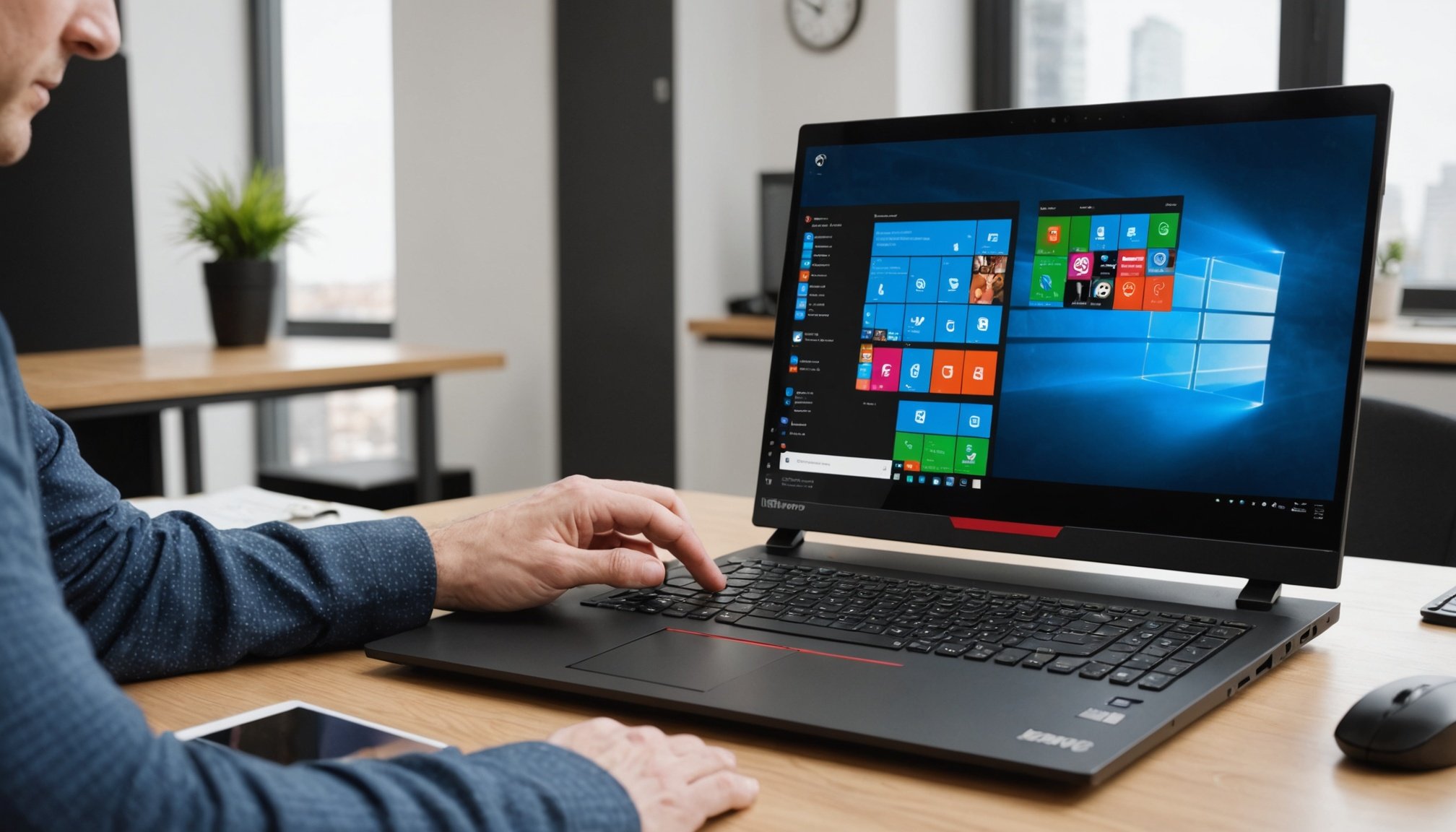Essential Security Practices for Remote Desktop Connections
Ensuring remote desktop security is critical to protect sensitive information. First and foremost, always use strong passwords. A complex password should include a mix of letters, numbers, and symbols. Avoid predictable phrases and update your passwords regularly to stay ahead of potential breaches.
To further enhance security, consider enabling two-factor authentication (2FA). This layer of security involves verifying your identity in two ways before allowing access. Options such as SMS codes or authenticator apps serve as effective 2FA methods. They significantly reduce the risks of unauthorized access since even if a password is compromised, the secondary authentication acts as a barrier.
This might interest you : Ultimate guide: seamlessly configure your voip system using cisco spa112 and synology nas
For those utilizing devices such as the Lenovo ThinkCentre M90n, maintaining up-to-date software is crucial. Consistently applying regular updates and patches for your operating system counters vulnerabilities that malicious attackers might exploit. Set your system to automatically download and install updates when available to ensure maximum protection.
Implementing these practices fosters secure connections when accessing remote desktops. Such proactive measures reinforce overall system security and mitigate potential threats, ensuring that data remains confidential and uncompromised. Regular audits to assess security measures help continually improve these defenses, keeping remote sessions safe and secure.
Topic to read : Ultimate guide to wi-fi security: essential tips for safeguarding your tp-link archer c5400x network in large homes
Configuring Firewall Settings
Configuring your Lenovo firewall setup is crucial for maintaining a secure network environment. Proper firewall configuration ensures protection against unauthorized access and potential threats.
Understanding Windows Firewall
The Windows Firewall acts as a barrier between your computer and the internet. It controls the data that flows in and out, allowing or blocking traffic based on pre-set rules. To configure this, access the Control Panel, navigate to “System and Security,” and select “Windows Firewall.” Familiarize yourself with its settings for optimal protection.
Configuring Firewall Rules for Remote Desktop
To maintain secure network connections when using Remote Desktop, you need to define specific firewall rules. Navigate to “Advanced Settings” within Windows Firewall. From there, create a new rule by specifying the port, protocol, and action. Ensure that the ports used for Remote Desktop are opened, while unauthorized access is blocked.
Testing Firewall Settings After Configuration
Once you’ve adjusted the settings, it’s vital to test them. Use network testing tools to ensure the firewall effectively allows necessary traffic and blocks unauthorized access. Simulate both internal and external connections to confirm that your Lenovo firewall setup is robust and reliable. This step ensures that configurations meet your security needs effectively.
Implementing Encryption Methods
Ensuring remote desktop encryption is critical for securing RDP connections. Numerous encryption standards exist, each enhancing RDP security and data protection.
To start, enabling Network Level Authentication (NLA) is fundamental. It restricts access to users with authenticated network credentials, protecting against unauthorised logins. Here’s a quick guide to enable NLA:
- Access the System Properties panel.
- Navigate to the Remote tab.
- Check “Allow connections only from computers running Remote Desktop with Network Level Authentication.”
Combining NLA with a Virtual Private Network (VPN) significantly boosts security. VPNs encrypt data travelling between your device and the server, preventing interception. When it comes to recommendations, consider reliable solutions like OpenVPN, NordVPN, or Cisco AnyConnect to ensure comprehensive security layers.
Incorporating these methods transforms your infrastructure into a fortress of data safety. By maintaining vigilance and updating security measures, you solidify your defence against potential threats. These strategies are not just recommendations; they are essential practices in today’s technological landscape. Employing robust encryption is imperative for confident, risk-free remote connection use.
Lenovo-Specific Configuration Tips
Understanding Lenovo ThinkCentre settings and device-specific configurations can greatly enhance your user experience, particularly if you regularly use RDP on Lenovo devices. These configurations ensure that your device runs optimally and securely.
Recommended Software for Lenovo Devices
For those using Lenovo devices, it is highly recommended to install Lenovo Vantage. This software provides vital updates for drivers, software, and BIOS, which are essential for maintaining system stability. Another useful tool is Lenovo System Update, which automates the updating process, keeping your hardware smooth-running with minimal effort.
BIOS Settings That Enhance Security
Adjusting BIOS settings can significantly elevate security. Ensure the Secure Boot option is enabled to protect your system against unauthorized firmware and malware. Additionally, activate the Supervisor Password feature to prevent unauthorized BIOS access, thereby safeguarding your system configuration against malicious changes.
Utilizing Lenovo Support for Security Features
Lenovo provides robust online support to help users manage security features effectively. For personalized assistance, access Lenovo’s Support website, where you’ll find guides, forums, and professional assistance, all tailored to Lenovo devices. This service is vital for addressing security concerns and receiving the latest security updates and patches.
By adhering to these configuration suggestions, Lenovo device users can optimize performance and enhance device security efficiently and effectively.
Monitoring and Auditing Remote Access
Effective monitoring and auditing of remote access are essential to maintaining robust security. Logging remote access sessions allows organizations to keep a comprehensive record of activities. This provides not only an audit trail of who accessed which system and when, but also helps in identifying patterns that could indicate potential security threats.
Several tools are available for monitoring remote desktop activities. These tools can track desktop interactions, transfers, and other critical metrics. Effective tools include Splunk, which offers detailed logging and analysis, and SolarWinds MSP, known for its comprehensive auditing capabilities. Deploying such tools can significantly enhance the security posture by giving IT teams the data they need to respond rapidly to anomalies.
When it comes to identifying unauthorized access attempts, it’s crucial to have predefined alerts. Anomalies like unusual login times or attempts from unknown IP addresses can be quickly flagged. With precise alerts, predefined thresholds, and real-time notifications, security audits can prompt a swift response to potential breaches, ensuring networks remain secure. By leveraging these practices, organizations not only comply with security standards but also safeguard their digital environments against intrusions.
Best Practices for User Education
Enhancing user training is essential for organisations to safeguard their systems effectively. By implementing security awareness initiatives, companies can educate and empower their employees to make informed decisions consistently.
Creating a Security Awareness Program for Employees
Establishing a comprehensive security awareness program assists in educating employees about the significance of cybersecurity. These programs typically include understanding potential threats, recognising phishing attempts, and the importance of strong password management. Educational materials should be engaging and regularly updated to reflect the ever-evolving cyber landscape.
Regular Training Sessions on RDP Security
Consistent and targeted training sessions focus on Remote Desktop Protocol (RDP) security. Such training should cover safe usage practices, recognising unauthorised access attempts, and securing remote connections. By holding regular sessions, employees can remain vigilant and updated on best practices, diminishing potential vulnerabilities.
Developing a Response Plan for Security Breaches
Preparing a response plan for security breaches entails detailed steps for mitigation should an incident occur. This plan involves identifying the breach, communicating with affected parties, and implementing corrective measures to prevent future occurrences. Ensuring that employees are familiar with this plan through user training strengthens the organisation’s readiness to handle cybersecurity threats effectively.






